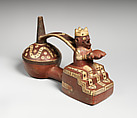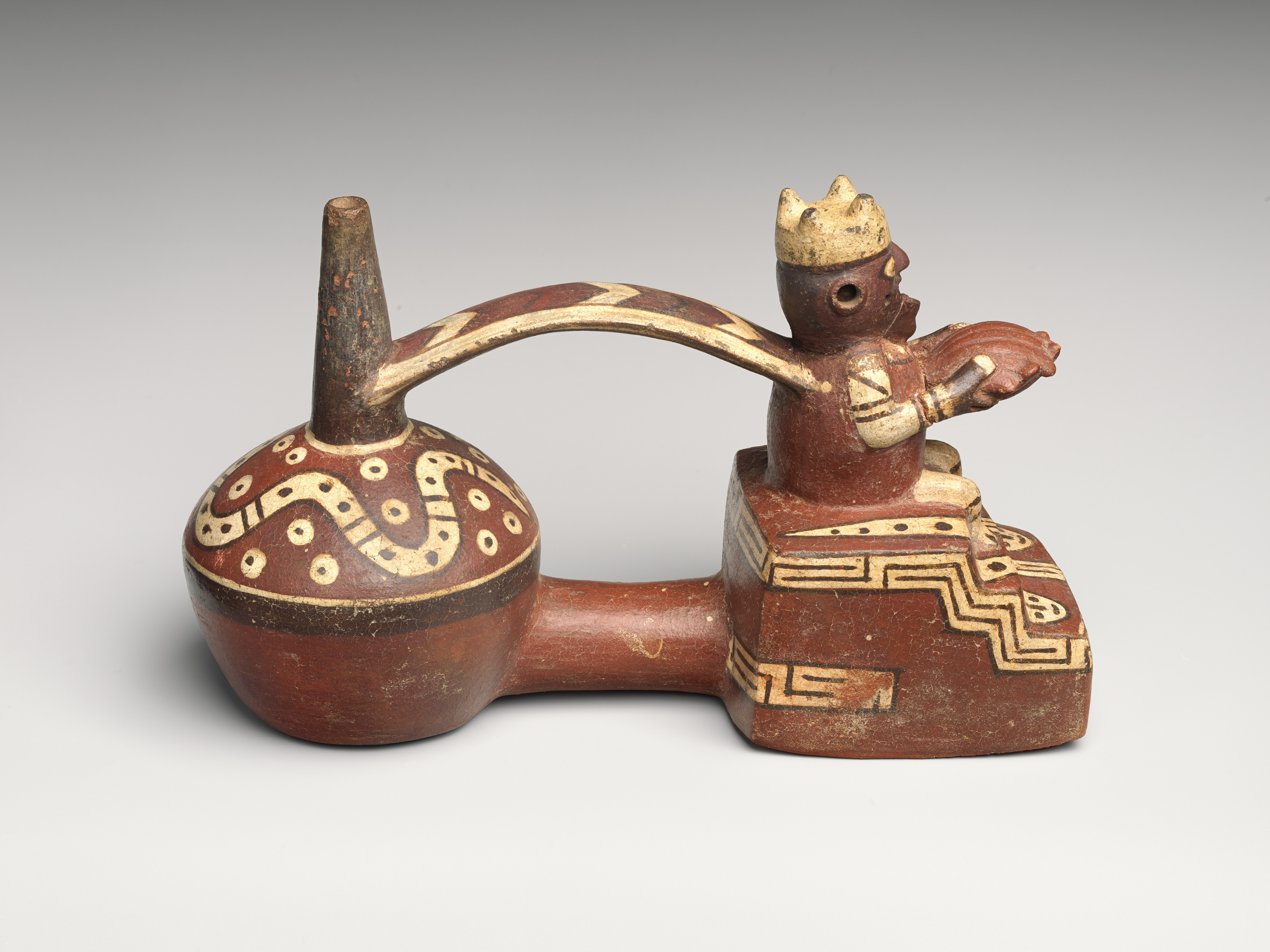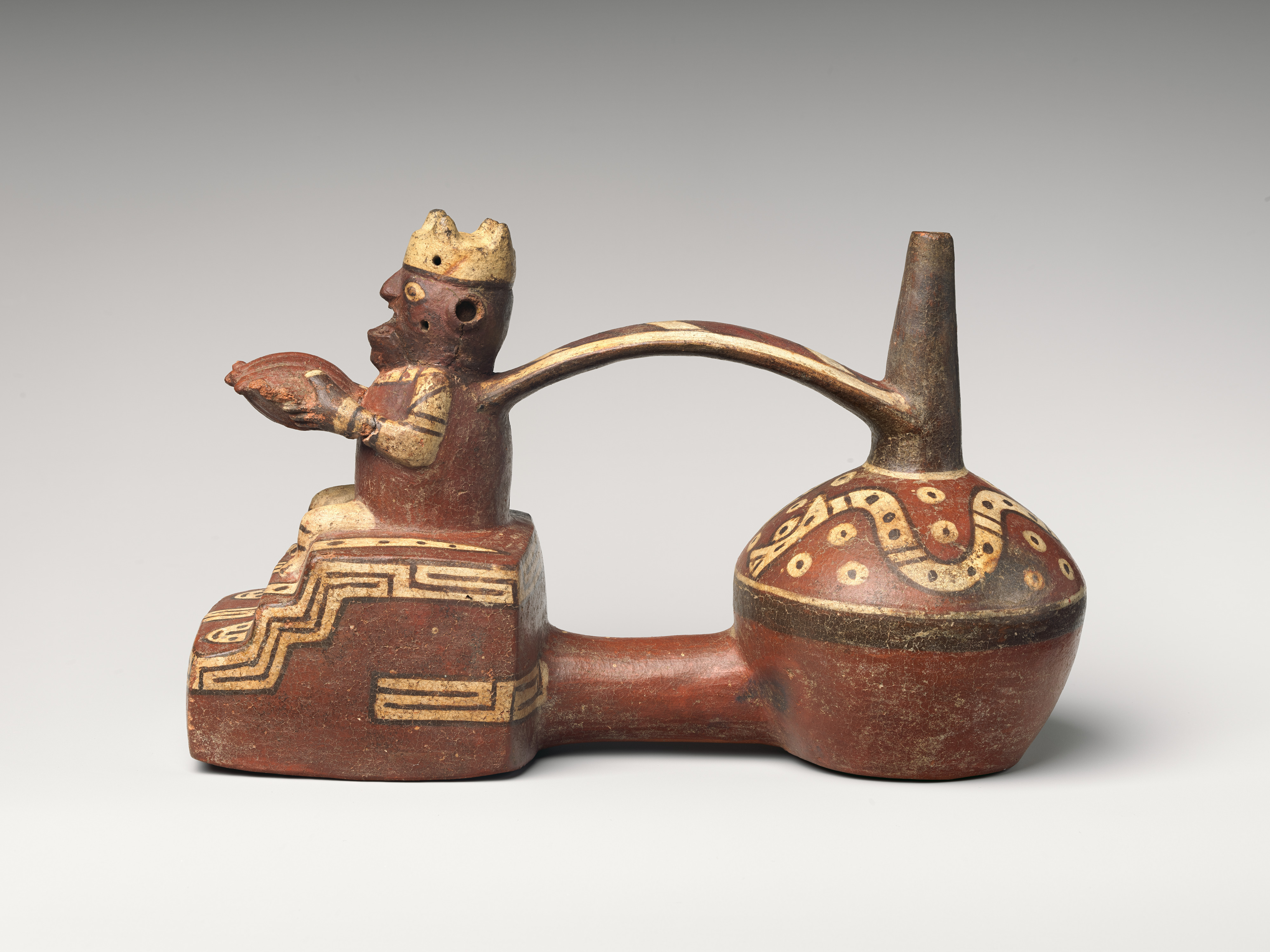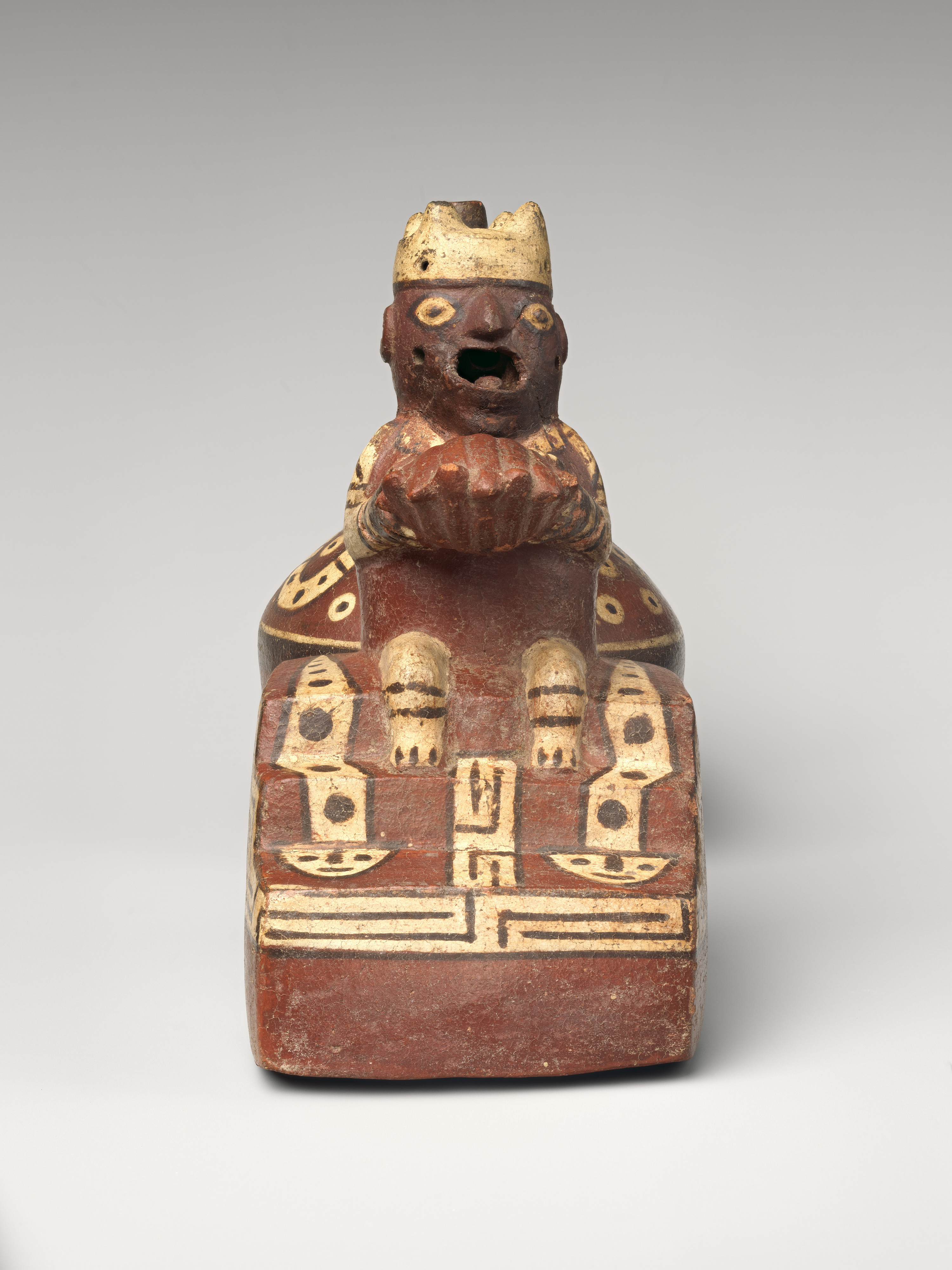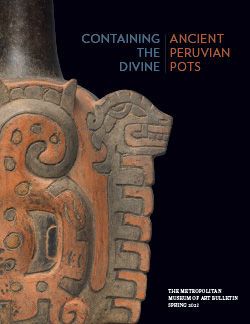Double-chambered bottle
Not on view
The Wari Empire expanded from highland Ayacucho to dominate much of what is today Peru between 600 and 1000 CE. In some regions, the presence of Wari settlements or administrative centers suggests territorial control or economic domination. In others, its influence was most visible in the transformation of the visual arts, with artists incorporating themes, designs, and colors of the imperial style into their works.
The form and decoration of this double-chambered bottle show the influence of the Wari Empire on the Central Coast of Peru. It was reported that this object came from Pachacamac, an important oracle center during the Inca period (1400-1535 CE) but already of great regional importance during the Wari era. Double-chambered vessels of similar design—known by archaeologists as "Pachacamac style"—have been found there (Eeckhout 2018; Franco and Paredes 2016, fig. 300). These findings include a similar ceramic sculpture with a modeled human holding a Spondylus shell currently in the collection of the Ethnologisches Museum, Berlin (V A 49703).
One chamber, shaped as a single spout bottle, is connected through a conduit and a bridge to a modeled figure seated on a stepped platform and wearing a four-cornered hat, a marker of elite status in Wari times (e.g., 1983.497.6 or 1994.35.158). The figure’s mouth—partially broken on its upper-left side—was minimally reconstructed to show that it was originally modeled open, playfully relating it to the sound generated by the whistle inside the ceramic head. As part of a widespread tradition in the Andes, this double-chambered vessel, partially filled with water, produces sound when it is swayed side to side (see other examples: 66.30.4, 1988.117.7, 64.228.18).
The sides of the platform are decorated with stepped band designs. Snakes are painted on top of the platform, on each side of the human figure, evoking the staves with heads carried in each hand by Wari dignitaries (e.g., 1978.412.237a, b). In this scene, both staves rest by his feet, while the figure holds up a Spondylus shell, one of the most important ritual substances in the ancient Andes. A wavy snake and white circles with black spots decorate the other chamber, while the ceramic bridge is painted with a band of chevrons. These decorative elements were introduced by the Wari when their expansionist empire dominated the coast by 700 CE (see 1996.290, 1978.412.116, and 1997.174)
Hugo C. Ikehara-Tsukayama, Senior Research Associate, Arts of the Ancient Americas, 2023
References and further reading
Eeckhout, Peter. "The Middle Horizon and Southern Andean Iconographic Series on the Central Coast of Perú," in Images in Action: The Southern Andean Iconographic Series, edited by William H. Isbell, Mauricio I. Uribe, Anne Tiballi, and Edward P. Zegarra, pp. 533-69. Los Angeles: UCLA Cotsen Institute of Archaeology Press, 2018.
Franco Jordán, Regulo and Ponciano F. Paredes Botoni. Templo Viejo de Pachacamac: Dioses, arquitectura, sacrificios y ofrendas. Lima: Institute of Andean Research, Fundación Wiese, 2016.
Ikehara-Tsukayama Hugo C., Dawn Kriss, and Joanne Pillsbury. "Containing the Divine: Ancient Peruvian Pots." Metropolitan Museum of Art Bulletin vol. 80, no 4 (Spring 2023).
Isbell, William H. "Cultural Diversity in Middle Horizon Wari: Mortuary Practices, Ceramic Styles, and Religious Experience." Research Papers of the Anthropological Institute Vol. 8 (2019): 10-45.
Lumbreras Salcedo, Luis G. "Los Wari en Pachacamac," in Pachacamac: El oráculo en el horizonte marino del sol poniente, edited by Denisse Pozzi-Escot, pp. 97-113. Lima: Banco de Crédito del Perú, 2017.
Menzel, Dorothy. "New Data on the Huari Empire in Middle Horizon Epoch 2A." Ñawpa Pacha 6 (1968): 47–114.
Ochatoma Paravacino, José and Martha Cabrera Romero, eds. Wari: Nuevos aportes y perspectivas. Ayacucho: Producciones Estratégicas de Edgar Hugo Cano Pérez, 2022.
Due to rights restrictions, this image cannot be enlarged, viewed at full screen, or downloaded.
This artwork is meant to be viewed from right to left. Scroll left to view more.
